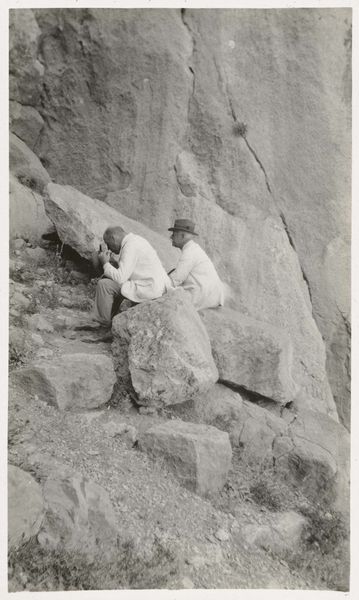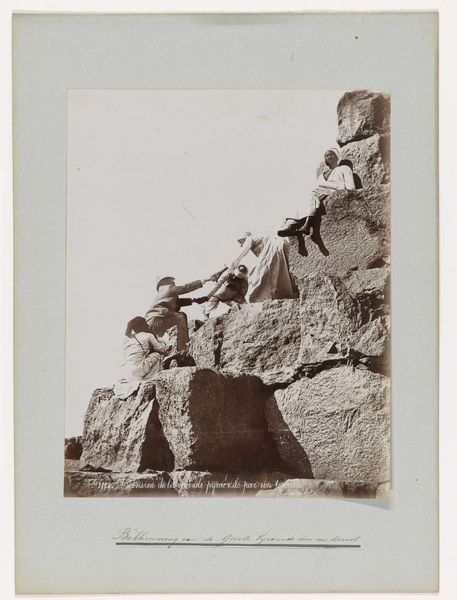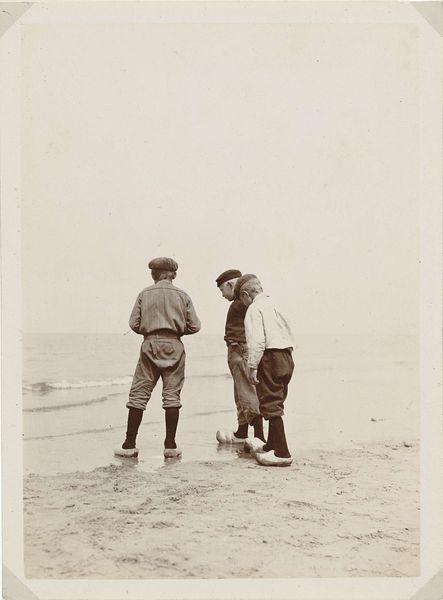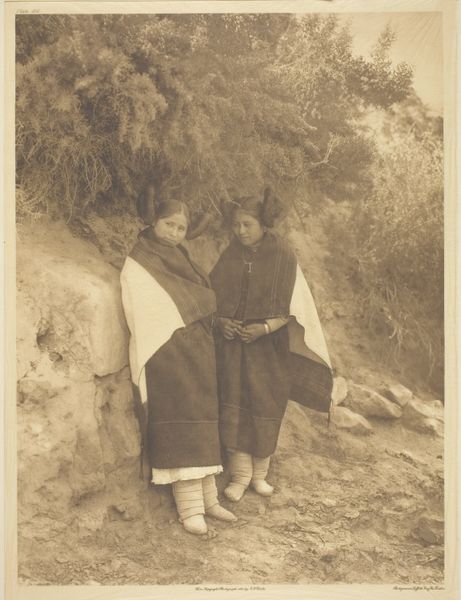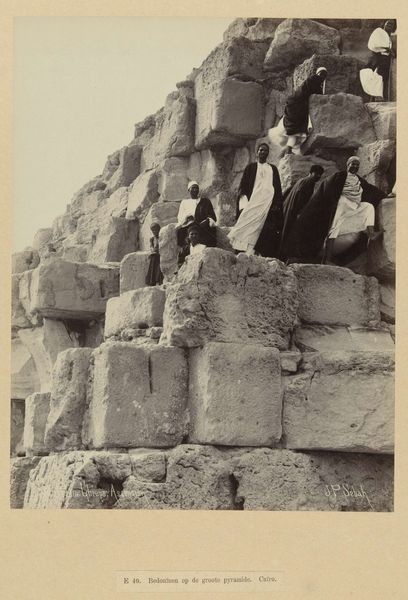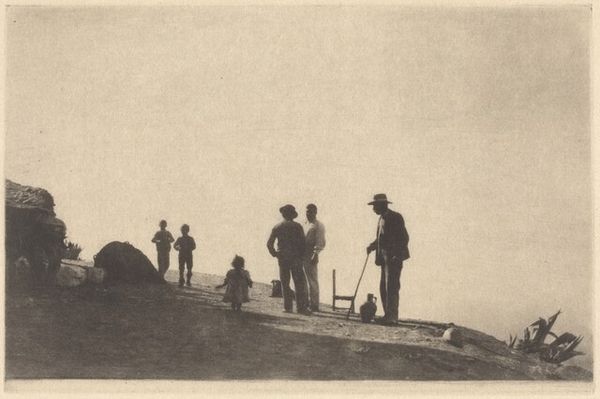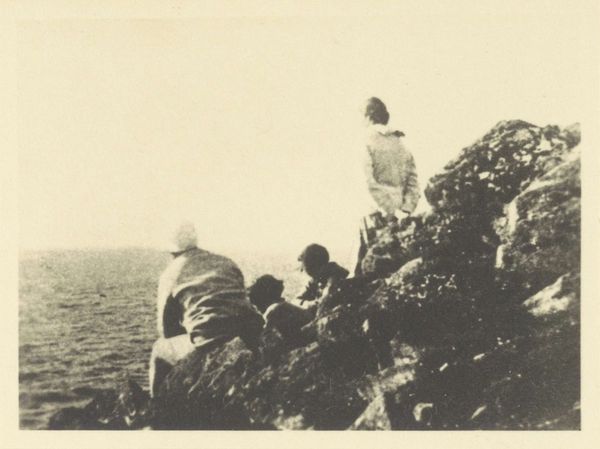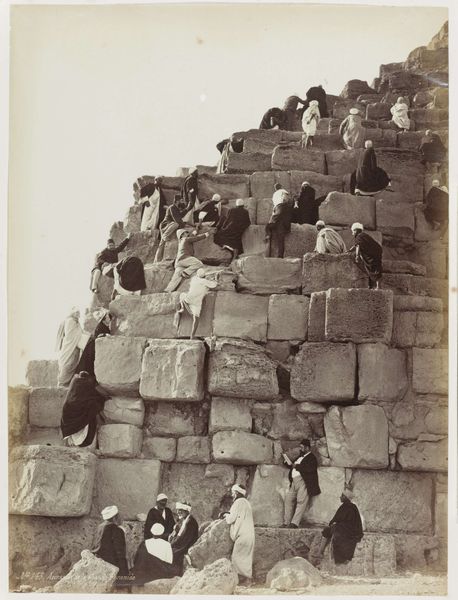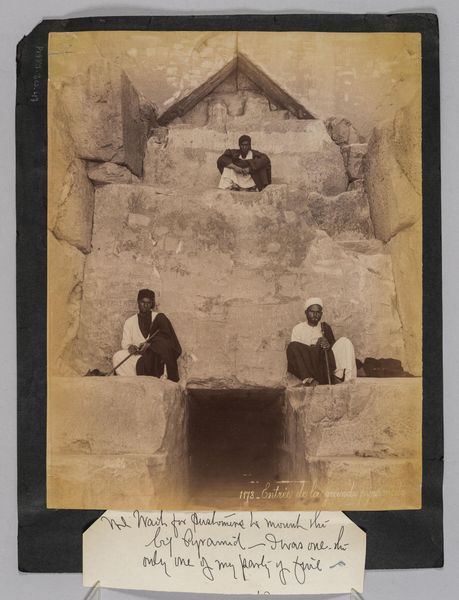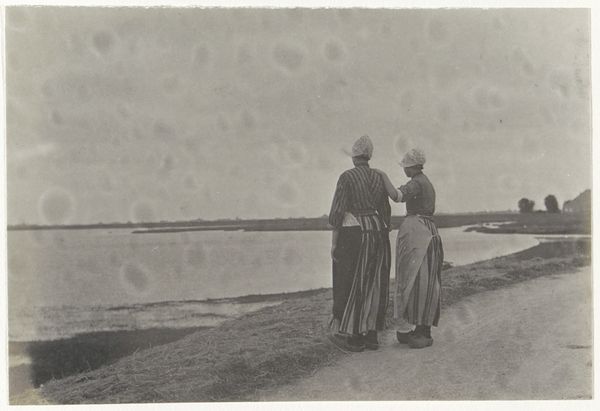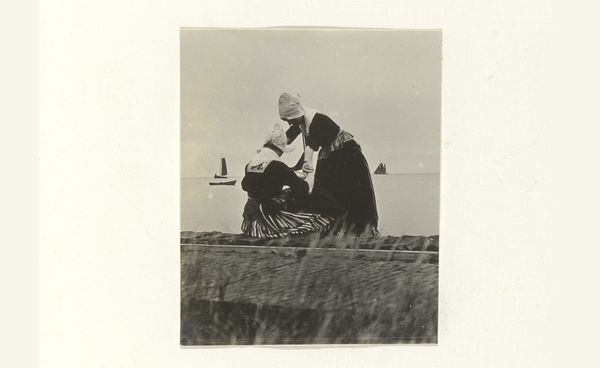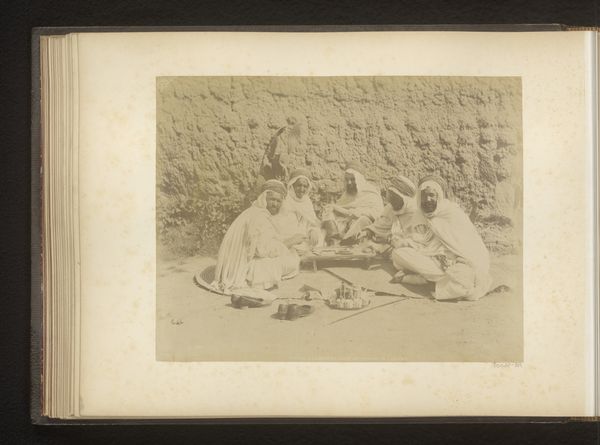
paper, photography, gelatin-silver-print
#
pictorialism
#
landscape
#
paper
#
photography
#
historical photography
#
gelatin-silver-print
#
indigenous-americas
#
monochrome
Dimensions: 39 × 28.7 cm (image/paper); 55.5 × 45.5 cm (mount)
Copyright: Public Domain
Editor: So, here we have Edward Curtis's "Watching the Dancers," a gelatin silver print from 1906, held here at the Art Institute of Chicago. There’s something quite solemn about it, the tones are so muted. What symbols stand out to you in this image? Curator: Notice the arrangement: these figures are positioned looking out, their backs to us. In many Indigenous cultures, the gaze holds significant power, direction, and intent. This compositional choice deflects the gaze away from the viewer, maintaining privacy around this observed ritual, this ‘dance’. Editor: That’s a compelling point, privacy… almost like we’re not meant to fully understand what's happening. But what about the way they're dressed? Curator: Precisely. Clothing and regalia are never merely decorative, are they? Consider the cloaks, likely woven or dyed with natural pigments. What visual echoes do you notice between the figures and the weathered building materials? Editor: They both seem so tied to the earth somehow! The shades of browns and whites really blur the distinction. It creates a connection between them and their land! Curator: Exactly! The earth-toned robes act as camouflage against the dwellings; they arise organically from the land itself. Think of the psychological implications—the blending of self and place… and what cultural meanings it may convey for community or belonging. Does it affect how you view the photograph knowing that? Editor: Absolutely. It transforms my understanding. I thought it was just a picture of people watching something, but now, seeing how interconnected they are, it has a far deeper story of people interwoven with their surroundings. Curator: Visual culture always gives rise to memory. Now, we both carry that history forward a little further.
Comments
No comments
Be the first to comment and join the conversation on the ultimate creative platform.
